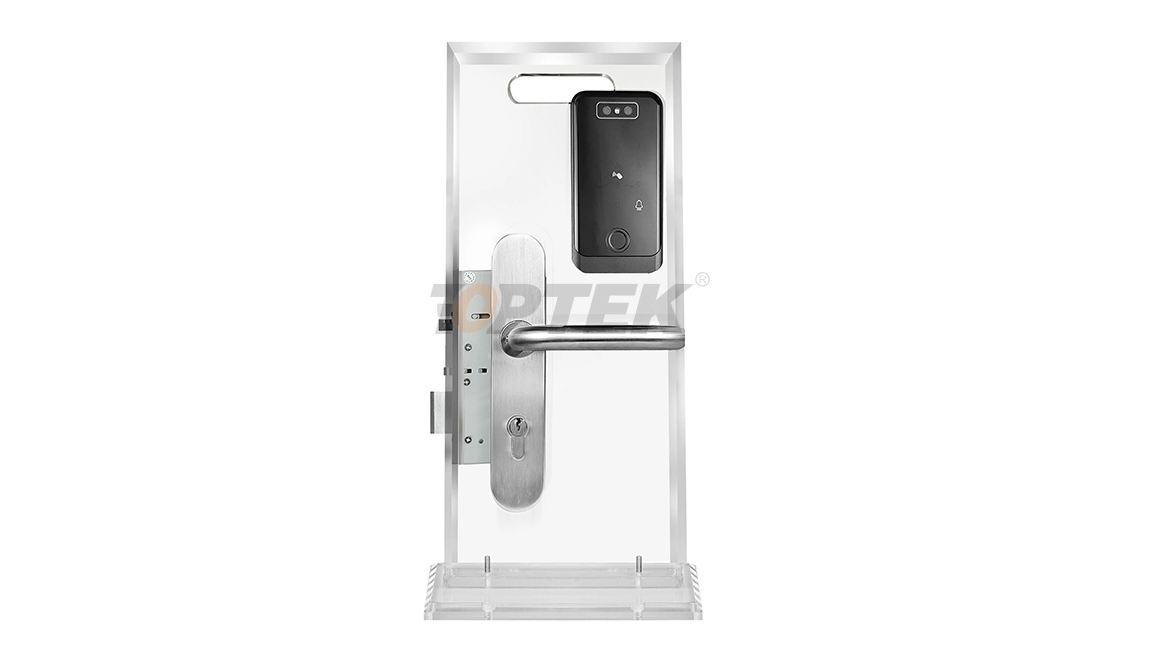If you're in the business of manufacturing or selling smart locks and electronic access systems, obtaining a CE certification is a crucial step in accessing the European market. But what exactly does CE certification mean? How does it impact your product, and what do you need to do to comply? This comprehensive guide will walk you through everything you need to know about CE certification for smart locks and electronic access systems, ensuring that your products can be safely sold across the European Union (EU).
What is CE Certification?
CE certification is more than just a mark on a product; it is an indication that the product complies with the stringent health, safety, and environmental protection requirements outlined in EU legislation. CE stands for “Conformité Européenne,” or “European Conformity” in English. The CE mark is mandatory for a wide variety of products sold within the 30 nations that make up the European Economic Area (EEA).
For smart locks and electronic access systems, CE certification indicates that the product meets EU regulations on essential directives such as electrical safety (Low Voltage Directive), electromagnetic compatibility (EMC Directive), and sometimes even environmental sustainability (RoHS Directive).
Why is CE Certification Essential for Smart Locks?
Smart locks and electronic access systems cater to critical security and convenience needs, but they also pose unique risks, such as unauthorized access, malfunction, or interference with other electronic devices. CE certification assures both regulators and consumers that the product is safe, reliable, and compliant with EU laws. Here are some of the primary reasons CE certification is essential:
1. Market Access
CE certification is legally required for selling smart locks in the EU. Without the CE mark, your product cannot legally enter the European market, shutting you out from a customer base of over 500 million people.
2. Consumer Confidence
The CE mark serves as a signal to consumers that the product has been rigorously tested and meets high safety and quality standards. This boosts buyer confidence, making your product more attractive to European customers.
3. Avoidance of Penalties
Selling non-CE-certified products in the EU can result in significant penalties such as recalls, bans, or fines. CE certification helps you avoid these costly pitfalls.
What are the Key Directives for CE Certification on Smart Locks?
Smart locks and electronic access systems fall under multiple EU directives, depending on their functionality and features. Below are the key directives applicable to achieving CE certification for these products:
1. Low Voltage Directive (LVD)
This directive ensures that electronic products operating within a specific voltage range are safe for use. Smart locks with mains-powered or battery-powered components must adhere to this directive to prevent electrical hazards.
2. Electromagnetic Compatibility Directive (EMC)
Smart locks often rely on wireless communication protocols such as Wi-Fi or Bluetooth, which can interfere with other devices. Compliance with the EMC Directive ensures that your product operates without causing or suffering from electromagnetic interference.
3. Radio Equipment Directive (RED)
For electronic access systems utilizing radio frequencies (e.g., remote controls, RFID), compliance with the RED directive is critical to ensure proper frequency usage and connectivity.
4. Restriction of Hazardous Substances (RoHS) Directive
The RoHS Directive regulates the use of hazardous substances like lead and mercury in electronic components. Compliance assures that your products are environmentally friendly.
5. General Product Safety Directive (GPSD)
This directive applies more broadly to ensure that consumer goods, including smart locks, are safe under normal usage conditions.

Process of Obtaining CE Certification for Smart Locks
Achieving CE certification may seem like a daunting task, but breaking it down into manageable steps can simplify the process. Below is a step-by-step guide:
Step 1. Identify Applicable Directives
Determine all EU directives that apply to your product. For smart locks and electronic access systems, key directives usually include LVD, EMC, and RoHS, among others.
Step 2. Perform Risk Assessment
Conduct a risk assessment to identify potential hazards associated with your product. This includes electrical hazards, software vulnerabilities, and environmental risks.
Step 3. Conduct Testing
Your product needs to undergo rigorous testing to ensure compliance. This can be carried out in-house if you have the right facilities or outsourced to an accredited testing laboratory.
Step 4. Create Technical Documentation
Prepare comprehensive technical documentation that includes:
● Product design and specifications
● Test reports
● Risk assessments
● User manuals and safety instructions
This documentation must be stored for at least 10 years after the product is placed on the market.
Step 5. Sign the Declaration of Conformity
The Declaration of Conformity (DoC) is a legal document where you declare that your product complies with all applicable directives. It must be signed by an authorized representative of your company.
Step 6. Affix the CE Mark
Once you've ensured compliance and signed the DoC, you can affix the CE mark to your product. This should be visible, legible, and indelible on the product itself or its packaging.
Challenges of CE Certification for Smart Locks
While CE certification is essential, it can present certain challenges for manufacturers:
● Complexity of Compliance: Navigating multiple directives and their requirements can be overwhelming, especially for small businesses.
● Cost of Testing: Comprehensive testing can be expensive, particularly if specialized equipment or third-party labs are required.
● Constant Updates: EU regulations are frequently updated, meaning your compliance efforts must be dynamic and ongoing.
How to Simplify the Process of CE Certification?
Simplifying CE certification for smart locks is possible with the right strategies:
● Work with a Consulting Partner
Partnering with compliance consultants experienced in CE certification can minimize the complexity and workload. They can guide you through each step, ensuring nothing is overlooked.
● Invest in Pre-Compliance Testing
Running pre-compliance testing in your own facility allows you to identify issues early, saving time and money during formal testing.
● Use Modular Certifications
If your product uses pre-certified modules (e.g., Wi-Fi boards), you can simplify the certification process by leveraging these existing certifications.
Unlock Your Product’s Success in the EU Market
CE certification is not just a regulatory box to tick; it’s a badge of quality, safety, and legitimacy that can set your product apart in a competitive market. Taking the time to get it right ensures your smart locks and electronic access systems gain the trust of both regulators and customers alike.
If you’re looking for expert guidance to achieve CE certification for your product, partnering with industry specialists can provide the support you need. Now’s the time to get your products compliant and unlock your business’s potential in the EU market.
CE Certification lock
smart locks
CE-Certified Locks
English
العربية
Français
Русский
Español
Português
Deutsch
italiano
日本語
한국어
Nederlands
Tiếng Việt
ไทย
Polski
Türkçe
አማርኛ
ພາສາລາວ
ភាសាខ្មែរ
Bahasa Melayu
ဗမာစာ
தமிழ்
Filipino
Bahasa Indonesia
magyar
Română
Čeština
Монгол
қазақ
Српски
हिन्दी
فارسی
Kiswahili
Slovenčina
Slovenščina
Norsk
Svenska
українська
Ελληνικά
Suomi
Հայերեն
עברית
Latine
Dansk
اردو
Shqip
বাংলা
Hrvatski
Afrikaans
Gaeilge
Eesti keel
Māori
සිංහල
नेपाली
Oʻzbekcha
latviešu
অসমীয়া
Aymara
Azərbaycan dili
Bamanankan
Euskara
Беларуская мова
भोजपुरी
Bosanski
Български
Català
Cebuano
Corsu
ދިވެހި
डोग्रिड ने दी
Esperanto
Eʋegbe
Frysk
Galego
ქართული
guarani
ગુજરાતી
Kreyòl ayisyen
Hausa
ʻŌlelo Hawaiʻi
Hmoob
íslenska
Igbo
Ilocano
Basa Jawa
ಕನ್ನಡ
Kinyarwanda
गोंगेन हें नांव
Krio we dɛn kɔl Krio
Kurdî
Kurdî
Кыргызча
Lingala
Lietuvių
Oluganda
Lëtzebuergesch
Македонски
मैथिली
Malagasy
മലയാളം
Malti
मराठी
ꯃꯦꯇꯥꯏ (ꯃꯅꯤꯄꯨꯔꯤ) ꯴.
Mizo tawng
Chichewa
ଓଡ଼ିଆ
Afaan Oromoo
پښتو
ਪੰਜਾਬੀ
Runasimi
Gagana Samoa
संस्कृत
Gaelo Albannach
Sepeti
Sesotho
chiShona
سنڌي
Soomaali
Basa Sunda
Wikang Tagalog
Тоҷикӣ
Татарча
తెలుగు
ትግንያውያን
Xitsonga
Türkmençe
संस्कृत
ئۇيغۇرچە
Cymraeg
isiXhosa
ייִדיש
Yorùbá
isiZulu






































